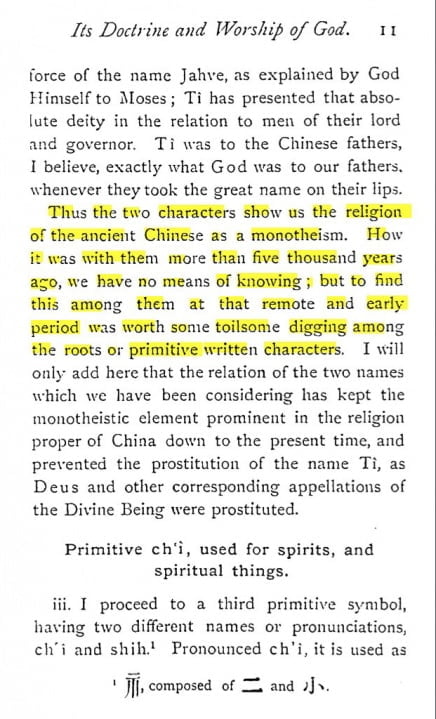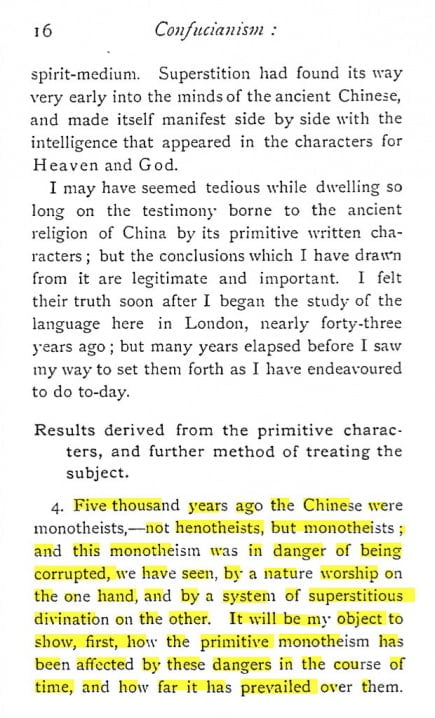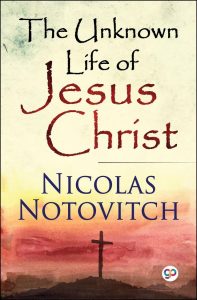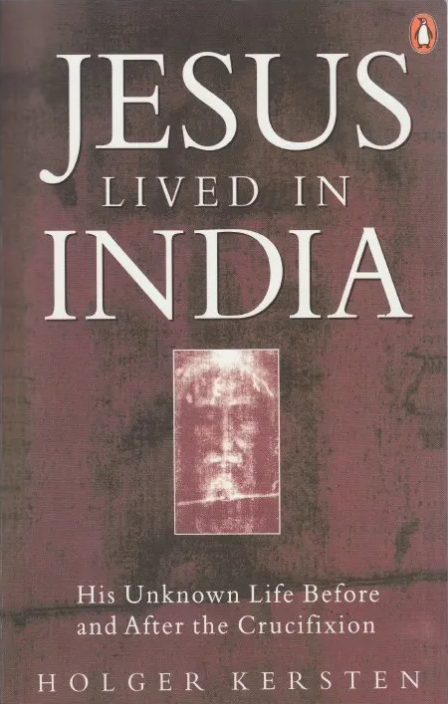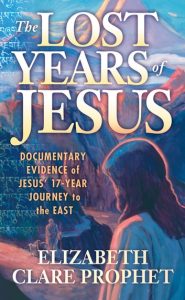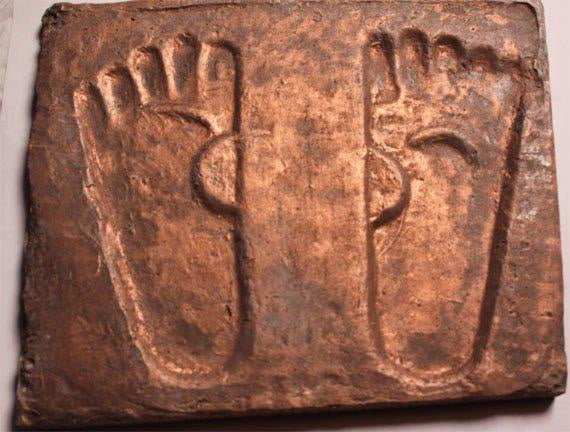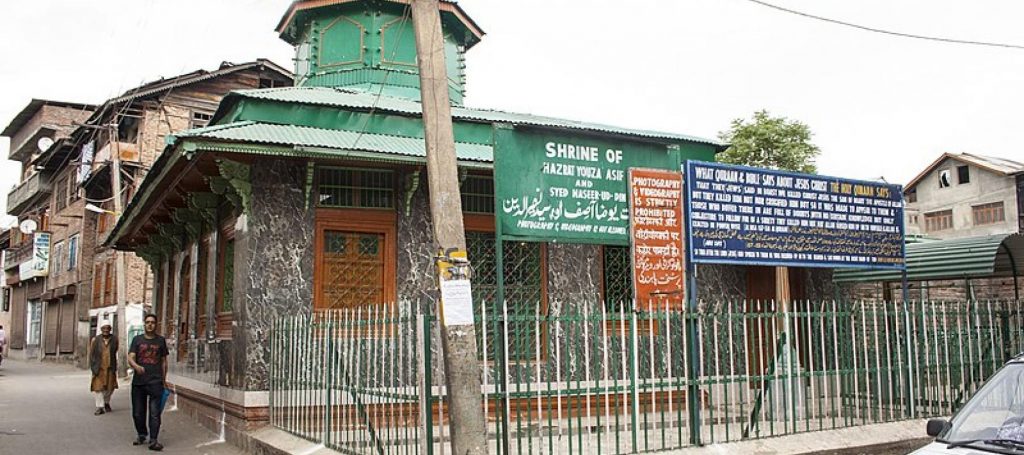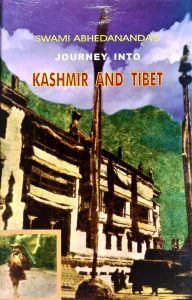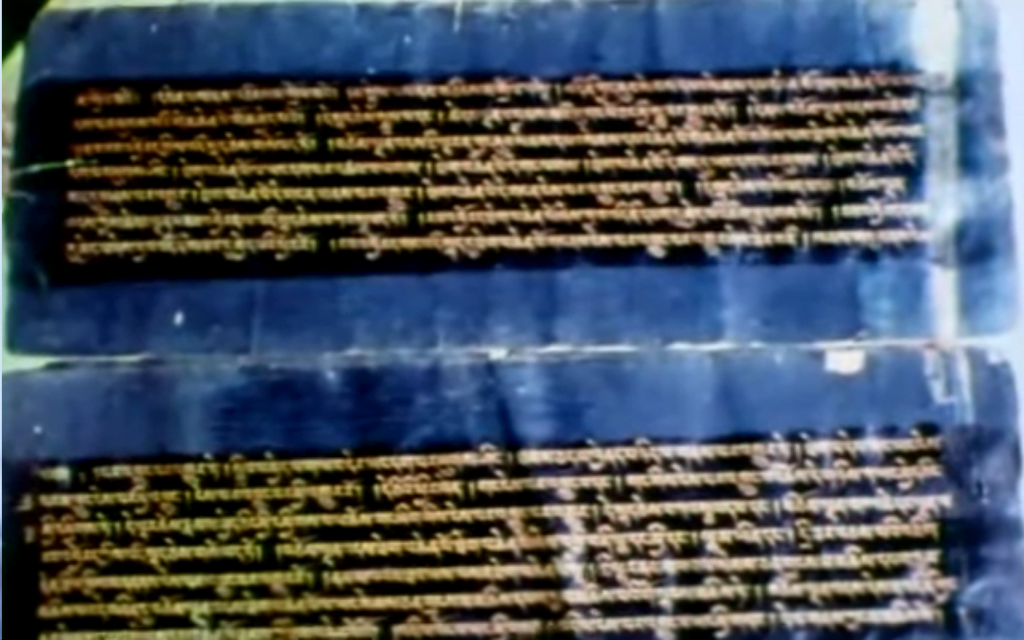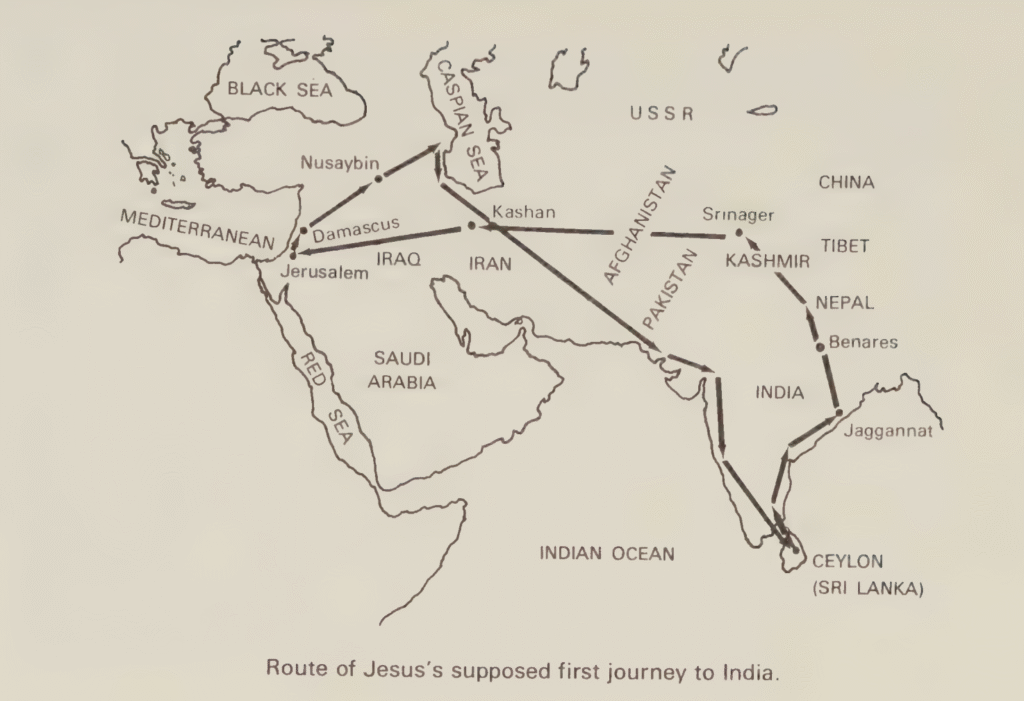Date: 5 Feb 2000.
Location: Old Kwong Tung Funeral Parlour, KL.
Table of Contents
(A) The doctrine of the Original Sin is false [02:07 – 06:32]
- We are conducting the Baitiangong Way of Obsequies (6th Spiritual Guidelines) or 白事 in Chinese. In early China, the bereaved family and the deceased are dressed in white (白).
- Xian Sheng: If you research early China’s history, you will find that they are dressed in white (白). And that is where the Chinese character 白事 is derived from.
- Unfortunately, obsequies in China have undergone so many changes that the Chinese funeral ceremonies have become very messy in the present time.
- The Chinese people have forgotten where the Chinese character pray/worship (拜) is derived from. History records that the earliest iteration of the Chinese character worship is depicted as the drawing of a man kneeling with hands clasped together. (See the character @ 13A-2000 D5.)
- Xian Sheng finds it strange that the Chinese people write the character worship without realising that it was derived from the drawing of a man kneeling down.
- The reason is that they did not study the history of the development of Chinese characters.
- The Chinese characters have a unique history that sets them apart from the rest of the languages.
- But where did the Chinese people originate from?
- In a recent research using DNA profiling, the researchers concluded that the Chinese people originated from Africa (Chinese Human Genome Diversity Project in 1998. See the Origins of the Chinese people @ 06A-2000 G2-G25.)
- Xian Sheng: If you are looking for your ancestors, go to Africa and not China.
- The China researchers tried to defend their nationalistic pride using the fossils of the Peking Man that is estimated to have lived 600,000 years ago (near Beijing).
- The Western researchers countered their argument using the fossils dug up in Africa more than 3 million years ago. (List of species, dates of the fossils, location discovered and the fossils discovered @ 06A-2000 F9.)
- The majority of the current Chinese people originated in Africa as their descendants migrated from Africa but what perplexes the scientific community is that early hominid species were already present in other parts of the world. (The origins of the Peking Man challenge the theory known as the “Out of Africa” model that Africa is the cradle of humanity.)
- Christianity only existed for about 1,999 years as today is the year 2000. Based on the Christian belief that Jesus’ death grants salvation from the Original Sin, then the generations of people who lived over 3,000 years before Jesus would not be able to be saved as they are not Christians.
- Xian Sheng: In many facets of life, you have to use your analytical mind and logical thinking to understand.
- What would happen to those people (who lived before the advent of Christianity)? The combined population of the Muslims, the Taoists, the Buddhists, the Confucianists and other religions lumped together far exceeds the population of the Christians. What would happen to them if they pass away? Are they beyond salvation too?
- Xian Sheng: That is not true (The doctrine of the Original Sin). There is only one CREATOR, not two.
(B) Show respect when attending other’s funerals [06:38 – 09:04]
- Xian Sheng used to be an idolator following the religion of his mother. After the demise of his mother, Xian Sheng went to live with his auntie in Ipoh, Perak.
- As both his uncle and auntie were Protestant, Xian Sheng adopted their religion and became a Christian, a churchgoer and studied the Christian scriptures.
- Xian Sheng would attend the funeral of his Christian friends too.
- Xian Sheng cited the example of Dr Soh, the first female doctor in Malaysia who happened to be a relative of Xian Sheng. He attended her Christian funeral which was along the road of the Lake Garden.
- While he was there, he did not recite the prayer out loud. Xian Sheng said he would never resort to those actions.
- The CREATOR knows that we are praying even if we pray in silence.
- Xian Sheng did not disrupt his Christian aunt’s funeral by reciting the prayer out loud. He asked the attendees there (some are Christians) whether he could make a commotion if he wanted to.
- Xian Sheng’s relatives were present at the funeral too. Xian Sheng only made one request to them. He apologised for not following their funeral rites and that he would pray for his aunt.
(C) You do not be a smart alec and divide the Spiritual Movement [09:07 – 11:41]
- Everyone can see that the Baitiangong way of Obsequies strictly observed the way of praying as portrayed by the pictogram of ancient Chinese writings for praying/worship which depicts a person kneeling down to pray.
- This is proof that the China Chinese pray to the CREATOR earlier than the Christians and Muslims. (Refer to Xian Sheng’s speech @ 13A-2000 D6-D10.)
- History already recorded that the Chinese actually prayed to the CREATOR. (Refer to the book “The Religions of China” written by James Legge, published in 1880 available on the Forgotten Books website.)
- However, certain individuals kept altering the practice until the citizens started to worship the Emperors and subsequently, the ministers too. The Emperors (Zhou Dynasty 1046 BCE) dissuaded their citizens from praying directly to the CREATOR under the threat of decapitation. The citizens dared not pray to the CREATOR, but the Emperor continued to pray to the CREATOR.
- Xian Sheng repeated that the Chinese prayed to the CREATOR earlier than the Christians and Muslims as these religions started about 1,970 years and 1,390 years ago respectively.
- Although the Chinese prayed to the CREATOR way earlier, unfortunately, they have strayed away from praying directly to the CREATOR and strayed too far away from the CREATOR. (The Chinese people no longer have the awareness that their earliest descendants prayed to the CREATOR as the only GOD. Refer to the book “The Religions of China” pages 11 and 16 which states that ancient Chinese were monotheistic.)

Page 11 
Page 16 - Prophet Muhammad came to teach the people to pray to the CREATOR. However, Muslims have strayed away from his teachings by dividing themselves into 77 sects.
- Jesus came to teach the people to pray to the CREATOR. Similarly, the Christians strayed away and divided themselves well over 3,000 denominations.
- Xian Sheng also came to teach us to pray to the CREATOR and not to worship idols.
- Xian Sheng: I hope that you would not divide yourselves too. There is only one CREATOR and not two. You pray to the CREATOR with your mind, body and soul. You do not be a smart alec and divide the Spiritual Movement. You will regret it if you divided the Spiritual Movement. Why? There is Heaven and there is Hell. The Heavens will wait to receive you in the end.
- Some people tell Xian Sheng that the CREATOR is all-loving. Xian Sheng acknowledges that the CREATOR is all-loving. However, they are only using one facet to describe the CREATOR.
- In reality, all the words from all the dictionaries combined from all over the whole world including worlds beyond Earth, are incapable of describing the CREATOR.
(D) Jesus lived in India [11:44 – 20:31]
- Xian Sheng: I personally do not believe that the CREATOR would come to this world to be crucified by you. This is what I do not believe in.
- The reason is that Xian Sheng himself was a churchgoer and he has heard a lot of things and read a lot of books on the subject.
- Xian Sheng read a book (The Unknown Life of Jesus Christ) written by Nikolai Notovitch or Nicholas Notovitch many years ago propounding the idea that Jesus lived in India. However, Xian Sheng has his doubts.

The Unknown Life of Jesus Christ – Nicholas Notovitch - Xian Sheng read another book (Jesus Lived in India) that was thicker than the earlier book written by Holger Kersten. The book propounded the same idea that Jesus lived in India. Xian Sheng still has his doubts.

Jesus Lived in India – Holger Kristen - Xian Sheng read yet another book (The Lost Years of Jesus) written by Elizabeth Clare Prophet that propounded the same idea. Xian Sheng remained doubtful.

The Lost Years of Jesus – Elizabeth Clare Prophet - The reason for his doubts was that he wanted to see for himself (the contents of these books).
- Xian Sheng took a lawyer and two followers with him to Srinagar in Kashmir, India.
- Upon their arrival at the Srinagar via road from Indira Gandhi International Airport, New Delhi, they were shocked to see Srinagar devoid of any tourists, except for the four of them.
- They were unaware of the ongoing militant insurgency in Jammu and Kashmir before purchasing the tickets to Srinagar but were fortunate to be able to travel there during the reprieve in the conflict.
- They stayed at the tourist houseboats which were also completely devoid of any other tourists, except for the four of them.
- Xian Sheng took a stroll around Srinagar by himself and met with a ranked military personnel. Xian Sheng shook hands and introduced himself as an ex-ranked military in Malaysia too. The officer was pleased to meet with a fellow officer.
- The officer proceeded to warn Xian Sheng not to trust his tour guide. He told Xian Sheng about a recent incident where a group of fanatics open fire on a family staying at the houseboats and killed all of them. They also kidnapped some German and British tourists. One of them managed to wrestle a weapon from the fanatics and escaped to tell this horrifying tale.
- Xian Sheng told the soldier that they do not fear what had happened and it was pointless to fear. (Xian Sheng knows that a person would die anyway and death is not as important as whether a person passes their examination in life. If they do, their soul goes to Heaven.)
- Xian Sheng said that he read a book that claimed that the descendants of Jesus live in India in the vicinity of Srinagar. Xian Sheng wants to look for him and asked around but to no avail.
- However, there is a tomb nearby. In the early days, they imprinted the feet of the deceased and it clearly shows the crucifixion scars on the feet.

Carved footprints of Yuz Asaf - The name of the person buried inside the tomb is Yuz Asaf (The word ‘Yuz’ stands for Yuzu, meaning Jesus, and ‘Asaf’ in Hebrew means gatherer, namely, one who was to collect the lost sheep of Israel).
- Xian Sheng requested permission from the fanatics surrounding the tomb to kneel and pray. The fanatics rudely snatched the itinerary held by the tour guide. When Xian Sheng questioned the tour guide why he allowed the fanatics to snatch away his itinerary, the tour guide told Xian Sheng not to interfere with them as they are fanatical people. Xian Sheng asked the tour guide to seek permission from the fanatics for them to pray next to the tomb. The fanatics thought Xian Sheng and his retinue are Muslims.
- The direction of the tomb does not comply with the traditional direction Muslims are buried. The direction is how the Jews would bury their dead. (The direction of the actual grave of Yuz Asaf is in an East-West facing direction. The traditional direction for Muslims is with the right shoulder facing towards the Qiblah in Mecca.)
- Xian Sheng had earlier searched around Srinagar, which is quite a large city and asked everyone they met about the person who claimed to be the descendant of Jesus. As Xian Sheng was unsuccessful in finding him, Xian Sheng knelt and prayed to the CREATOR next to the tomb, “GOD, if this is truly the grave of Jesus, let me find his descendant. Then I will believe. Let me find his descendant b’cos so much has been written that Jesus lives in India. Let me find his descendants.”
- They continued their tour of the city and kept asking around for Jesus’ descendants. All of a sudden, a male servant approached Xian Sheng and asked if he was looking for Basharat Saleem. Xian Sheng explained that older generations of Kasmiris tend to use male domestic servants instead of female servants.
- Xian Sheng replied that he was looking for Basharat Saleem and asked the servant how he came to know of it. The servant said that his master asked him to convey his invitation to Xian Sheng to visit his home. The servant proceeded to lead Xian Sheng and the brothers and sisters to his master’s home. Xian Sheng would never have found his home on their own.
- Xian Sheng waited in the living room for Basharat Saleem to finish his prayers. Basharat Saleem prayed many times in a day (Most Muslims pray five times a day) before descending downstairs to greet his guest.

Rectangle structure in Rozabal indicating “Tomb of a prophet:… The Tomb of Yuz Asaf” and Xian Sheng with Basharat Saleem, the descendent of Jesus - Upon seeing the four of them, Basharat Saleem placed his hands on them to bless them. Xian Sheng accepted his blessing as he was perfectly fine with the good gesture.
- They sat down for a conversation about Jesus. He gave Xian Sheng the names of Jesus’ wife, his two sons and his daughter.
- Xian Sheng said that they are the only people in possession of the names of Jesus’ wife, his two sons and his daughter in the whole world after Basharat Saleem shared the information with him and the names are kept safe with Xian Sheng’s lawyer.
- Xian Sheng asked Basharat Saleem for proof of the lineal descendants of Jesus. Xian Sheng did not hesitate to directly seek proof for himself.
- Basharat Saleem immediately replied that he has such proof. However, he said that he is a Muslim and that if he were to divulge the information, he would be killed. If he exposed the information, the Christians would hound him.
- Basharat Saleem said that he has provided a lot of information to the city’s governor when Kashmir was a princely state not under the administration of either India or Pakistan (Before 1947).
- Before the governor had the opportunity to exhume the body from the grave to determine whether the remains were indeed Jesus, the Kashmir Conflict broke out claiming the lives of many people and dividing Kashmir permanently into two different territories controlled by India and Pakistan respectively.
- Kashmir remained in conflict till this very day. The tomb had remained off-limits to everyone ever since. The tomb is known as Rozabal.

Rozabal Tomb at Srinagar - Xian Sheng suggested that if anyone intends to visit the Rozabal Tomb, they should wait for the conflict to die down because they could likely find themselves on a one-way trip.
- Xian Sheng said that they were able to return safely from Srinagar because they could have received the CREATOR’s blessing to do so or the fanatics did not harass them when they saw Xian Sheng and the brothers and sisters kneeling down to pray.
- Back to the conversation between Xian Sheng and Basharat Saleem, Xian Sheng was very discontented that Basharat Saleem withheld the artefacts (that could have proven that Jesus did not die on the cross but lived in Kashmir) despite his insistence for Basharat Saleem to reveal them for the world to see.
- Xian Sheng told Basharat Saleem that he would have committed a sin if he withheld the truth. Xian Sheng couldn’t care less that he is a descendant of Jesus.
- Xian Sheng explained to Basharat Saleem that he would be committing a sin for every single day that he withheld the artefacts because he would be complicit in encouraging people to tell lies. If Jesus did not die on the cross and Basharat Saleem withheld the artefacts, he inadvertently encouraged people to spread the lies (that Jesus died on the cross).
- The four of them had a lengthy discussion with Basharat Saleem at his home.
(E) Jesus records at Hemis Monastery Ladakh [20:34 – 22:10]
- Xian Sheng is not completely satisfied. Xian Sheng said that Elisabeth Caspari and Gloria Gasque travelled to Hemis Monastery, an old Tibetan monastery in Ladakh, India.
- There are records (manuscripts written in the ancient Pali language and later translated to the Tibetan language. The originals are kept in a monastery at Lhasa, Tibet) that state Jesus from the age of 13 to 29 studied in India1
- Books about Jesus living in India have been published by 4 authors. These books can be found in certain bookshops but are available in a limited number of copies. Xian Sheng has these books.
- The Unknown Life of Jesus Christ – Nicholas Notovitch
- Jesus Lived in India – Holger Kersten
- The Lost Years of Jesus – Elizabeth Clare Prophet
- Swami Abhedananda’s Journey into Kashmir and Tibet – Swami Abhedananda. He included the translation of 14 chapters with 224 stanzas relating to the life of Saint Issa.

Swami Abhedananda’s Journey into Kashmir and Tibet
- Xian Sheng travelled to Hemis Monastery. He made friends easily and the General Secretary of the Buddhist Association welcomed Xian Sheng.
(F) Basharat Saleem received a consciousness [22:10 – 23:23]
- Xian Sheng forgot to mention this part earlier.
- Xian Sheng asked Basharat Saleem how he knew Xian Sheng was looking for him as Basharat Saleem sent his male domestic servant to look for him.
- Basharet Saleem said while he was performing his Salah (daily ritual prayers) to the CREATOR, he received a consciousness that someone of great importance is looking for him. So he sent his male servant to look for that person.
- Xian Sheng and Basharat Saleem had never met prior to this meeting.
- Xian Sheng asked if this incident was a coincidence that Basharat Saleem, a Muslim who prayed to the CREATOR five times a day and every day of his adult life would choose that particular time and day out of 365 days to send his male servant to look for Xian Sheng.
- Xian Sheng explained that it was not a coincidence because at that particular time (when Basharat Saleem was also performing his Salah) he was praying to the CREATOR next to Rozabal Tomb requesting the CREATOR to let him know whether the tomb is Jesus’ tomb and for him to find Jesus’ descendants in Kashmir.
- Xian Sheng’s prayer was answered when they found Xian Sheng instead of Xian Sheng finding them.
(G) Hemis Monastery at Leh, Ladakh [23:26 – 25:30]
- Hemis Monastery lies in the mountains east of Srinagar. They had to pass through Kargil which was locked in a conflict at that time and many other towns to reach Leh, the Capital of Ladakh.
- They had to weave through winding mountainous roads to reach it. They stopped at a place with an altitude of over 13,000 feet where they have to take deep breaths every few steps they took.

Winding Mountainous road to Hemis Monastry - They finally reach the Hemis Monastery, south of the city of Leh, where the scrolls that documented Jesus’ travels from the age 13 to 29 to study Buddhism, witnessed by Dr. Elisabeth Caspari, Nicolas Notovitch and Holger Kersten, are displayed for public viewing. (Holger Kersten did not visit Hemis Monastery. Two other renown person that went to Hemis Monastery was Nicholas Roerich and Gloria Gasque)

Xian Sheng trip to Kashmir and Hemis Monastry - Xian Sheng said that they should ask the administrators of Hemis Monastery instead of him as they have the scrolls (proof of Jesus’ travels to India).
- Xian Sheng has taken the opportunity to photograph these documents. It is most unfortunate that the Tibetan monks do not allow the reproduction of these documents.

Manuscripts that describe Saint Issa travels to India written in Tibetan after translated from ancient Pali. - Xian Sheng does not know how to read Tibetan but the authors mentioned above have already written books that explained its contents which state Jesus was actually there.
- Jesus left Jerusalem at the age of 13 and travelled by foot to the East to study the Vedas and Buddhism. He returned to Jerusalem at the age of 29.

Jesus died in Kashmir – Andrea Faber Kaiser. Pg 17 - It is no wonder that Xian Sheng has never read any accounts of Jesus between the ages of 13 to 29 in the Bible (Refer to Luke chapter 2 and chapter 3). Xian Sheng knows now that Jesus travelled to India to study before returning to Jerusalem to teach praying to the CREATOR.
The Lost Years of Jesus. Edited from Youtube.
Important points:
- 8:28 – (Chapter V, Verses 13) “Fear the Lord, thy GOD; bend thy knees only before HIM and bring to HIM only the offerings which come from thy earnings.”
- 9:13 – (Chapter V, Verses 18) “HE willed, and the world was. By one divine thought, HE reunited the waters and separated them from the dry land of the globe. HE is the cause of the mysterious life of man, into whom HE has breathed part of HIS divine Being.”
- 9:58 – (Chapter V, Verses 26) “Pray not to idols, for they cannot hear you; hearken not to the Vedas where the truth is altered; be humble and humiliate not your fellow-man.”
(H) Chinese prayed to the CREATOR 6,000 years ago [25:30 – 26:13]
- Praying to the CREATOR is actually not a recent development, nor begun with the coming of Jesus (over 2,000 years ago).
- People have been praying to the CREATOR since before the time of Jesus.
- This is what Xian Sheng has consistently espoused that history shows the Chinese character for praying in its earliest iteration depicts the image of a person kneeling down to pray.
- The Chinese had already prayed to the CREATOR 6,000 years ago. However, the Chinese strayed from praying to the CREATOR.
- This is similar to many other religions that initially prayed to the CREATOR but subsequently strayed from this practice.
- Today, Xian Sheng wants to guide all of us back to the start when we pray to the CREATOR. That is all that Xian Sheng wants.
(I) Born ConTaoBuddhism, learnt Christianity, taught Baitiangong [26:34 – 28:54]
- Xian Sheng was born a ConTaoBuddhism, which is a term coined by Xian Sheng to explain the religious syncretism of Confucianism, Taoism and Buddhism practised by many Malaysian Chinese.
- Xian Sheng followed the religion of his father although his father’s presence in his life was minimal. His mother died during the Japanese regime when they dropped the first bomb on Singapore.
- At a later part of his life, Xian Sheng went to Ipoh to stay with his aunt and uncle who became his caretaker.
- Xian Sheng only knows how to speak Bahasa Melayu and English at that stage of his life. He does not know Chinese.
- Xian Sheng’s caretakers were Methodist and he followed their religion and became a Christian.
- He attended church and recite the Christian prayers (sing hymns and participate in Christmas celebrations too). He was a Christian for many years.
- When Xian Sheng left school (Senior Cambridge in 1955), he also left the Christian movement because there were many things that he could not accept (about the teachings of Christianity).
- When Xian Sheng started work at Port Klang (1956), someone from the Methodist Church in Klang approached Xian Sheng and asked him to rejoin Christianity and attend the Methodist Church.
- When Xian Sheng was the Secretary-General of the Malayan Teachers’ Union (1966 – 1967) his friend, Daniel tried to persuade him to return to the Christian fold. Xian Sheng rejected him stating that he likes to be free (from any religious attachments).
- Although Xian Sheng wanted to be free but he could not be free because he is now leading the Baitiangong followers to pray to GOD.
- Xian Sheng clarified that he is not free not because he is a servant of GOD but because he is a Disciple of GOD. (There is a distinction between a servant of GOD and a Disciple of GOD. A servant takes orders from his master to do work. A Disciple does work on their own initiative.)
- Xian Sheng tells the attendees, “GOD never ask you to pray to GOD. GOD is not so naive. But I ask you to pray to GOD because I know the consequences and the benefits of you praying to GOD. So I lead you to pray to GOD.”
(J) Did Jesus lived in India or not? [28:55 – 40:37]
- Xian Sheng read as many books as he can on religious topics like Confucianism, Taoism, Buddhism, Hinduism, Jewish rights, Christian book and others.
- Xian Sheng came across a book written by a Russian named Nicholai Notovitch that says Jesus lived in India. This book was written many years ago (The Unknown Life of Jesus Christ published in 1890).
- Nicholas Notovitch travelled to India and found documentary proof (Tibetan manuscripts) that Jesus travelled to India at the age of 13 years old and studied in various places until he went back to Jerusalem at the age of 29. See extracts from the book below.
- Xian Sheng also read books by Holger Kersten and Elizabeth Clare Prophet. (Elisabeth Caspari shared with Elizabeth Clare Prophet her experience in Hemis Monastery and the latter recorded them in her book “The Lost Years of Jesus”.)
- Xian Sheng did not believe what these authors had written about Jesus. Xian Sheng is a person who wants to witness first-hand instead of relying on what others said.
- That is the reason why Xian Sheng went to India. He also brought along a lawyer for the purpose of conducting research and two Baitiangong brothers as witnesses.
- At Srinagar, Xian Sheng met with an army officer who told him not to trust his tour guide.
- (Xian Sheng was rudely interrupted by a man singing a Christian song. His friend stopped him but the recalcitrant man continued his outburst shouting hallelujah and something unintelligible as he walked away). Xian Sheng to the rude man, “I don’t go to your Christian funeral and sing, you know. Don’t let me do that. Don’t let me do that. I’ve got a lot of Christian friends but I don’t go over there and sing like that, you know. You don’t want to listen, you’re not happy with it, you can go off.”2
- Xian Sheng went to Srinagar to find the truth out for himself. He read about Rozabal, the supposed tomb of Jesus, but he does not believe it because he was brought up by the Christians. He attended Church and he read the scriptures. (The Bible says that Jesus died on the cross at Golgotha, Jerusalem and was resurrected three days later. This is in stark contrast to Nicholas Notovitch’s book that Jesus survived the crucifixion and travelled to India.)
- Srinagar was devoid of tourists when Xian Sheng and the followers arrived. They were the only tourist staying at the houseboat. They did not realise that Srinagar was in a state of curfew earlier. They were very fortunate that the authorities lifted the curfew which coincided with the period Xian Sheng decided to travel there.
- Finally, Xian Sheng decided to visit Rozabal, the supposed tomb of Jesus. At that juncture in time, Xian Sheng did not know whether that tomb was the tomb of Jesus.
- The Americans tried to exhume the corpse inside the tomb to test the DNA after giving a lot of money to the governor, but a territorial conflict broke out that disrupted their efforts.
- The conflict resulted in Kashmir dividing into two territories belonging to Pakistan and India along the Cease Fire Line according to the Karachi Agreement.
- Kashmir could have had its own independence and been a sovereign nation. (When the British left India, Maharaja Hari Singh, the ruler of Jammu and Kashmir, was given the choice of acceding either to India or Pakistan or remaining independent. His indecision led to Pakistan and India fighting for control in Kashmir.)
- The conflict was ongoing when Xian Sheng visited Kashmir, especially in Srinagar and Kargil where Xian Sheng had been to.
- Next to the Rozabal Shrine, Xian Sheng knelt to pray to the CREATOR and asked, “GOD, if this is truly the tomb of Jesus, let me find his descendant. I want to know.”
- After praying next to the Rozabal Shrine, Xian Sheng continued his search in Srinagar to look for Basharat Saleem.
- Their search led them to a district when a man approached them and asked if they were looking for Basharat Saleem. He conversed in the Kashmiri language with Xian Sheng’s tour guide.
- The tour guide said that he is the servant of Basharat Saleem. Xian Sheng told the guide that if the man was indeed the servant of Basharat Saleem, please bring them to him.
- Basharat Saleem was in his prayer room when they arrived. After his prayers, he came down and blessed the four of them. Xian Sheng did not mind being blessed as it does not matter to Xian Sheng. (The irony here is that a man blessed the Disciple of GOD instead of the other way around.)
- In their conversation in English, Basharat Saleem revealed the name of Jesus’ wife, his two sons and his daughter. Xian Sheng believes that they are the only people in the world that was given the names of Jesus’ family. Xian Sheng’s lawyer kept this confidential information with him in Singapore.
- Basharat Saleem said that he has artefacts to prove it (that he is the lineal descendant of Jesus).
- Xian Sheng told Basharat Saleem to bring out his artefacts and to let the world know that the tomb at Rozabal Shrine is actually the grave of Jesus and not an unknown saint named Yuz Asaf. Yuz Asaf was the name Jesus used when he travelled within India.
- What Xian Sheng mentioned is found in books written by Nicholas Notovitch, Holger Kersten and Elizabeth Clare Prophet. Xian Sheng asked us to get these books and read them. We do not have to accept if we do not believe them but Xian Sheng asked us to keep an open mind and read for the sake of knowledge.
- Xian Sheng told Basharat Saleem that it is high time that he brings out the artefacts and documents to prove that the tomb is the grave of Jesus. He would commit a very grievous sin if he does not. The reason is that Basharat Saleem would be complicit in allowing people to concoct and mislead the people of the world.
- Basharat Saleem was very reluctant to do so, expressing his fear that if he were to bring out the evidence, both the Muslims and the Christians may go after his neck.
- When asked where he kept the artefacts, Basharat Saleem replied that he kept them in a secret place. Xian Sheng told him that he hoped his son would know the secret location in the event that he died before revealing them to the world.
- Basharat Saleem replied that it would be up to his son to decide whether he would reveal these artefacts as he does not dare to at the present time.
- Xian Sheng is not sure if Basharat Saleem is still alive. He asked if we could check with the tour guide and ideally, get the people in Srinagar to convince Basharat Saleem to reveal these artefacts that would prove that Jesus was in India.
- The books stated that Jesus lived in India from the age of 13 to 29 years old. This corresponds with the missing years of Jesus’ life from the Bible. This aroused Xian Sheng’s curiosity – Where did Jesus go? (Wikipedia states that Jesus was probably working as a carpenter in Galilee for all those years.)
- The books stated that Jesus went to Nepal to study Buddhism.
- The journey to Hemis Monastery by road crosses the Himalayan mountain ranges and at one point reaches an altitude of over 13,000 feet before descending to Leh, the capital of Ladakh. The Hemis Monastery is less than 40km south of Leh.
- The lawyer and two followers accompanying Xian Sheng felt sick from a condition known as altitude sickness as they tried to walk too fast in low oxygen conditions.
- The Secretary General of the Buddhist Association in Leh welcomed Xian Sheng. His honorific title is known as Rinpoche.
- The Rinpoche brought Xian Sheng and his entourage inside the Monastery and showed them everything especially the scrolls translated from the Ancient Pali language to the Tibetan language.
- Xian Sheng concluded by asking this important question, “Did Jesus lived in India or not?” Xian Sheng suggested that if we want to know the answer, buy the books and read them ourselves. Ideally, take a trip to India like Xian Sheng did to find out for himself.
- What is important is that we do not just listen to what someone says or read a book and believe in them implicitly, but to search for the truth ourselves.
Extracts from the book “The Unknown Life of Jesus Christ” by Nicolas Notovitch.
Chapter IV
- When Issa was thirteen years old, the age at which an Israelite is expected to marry,
- The modest house of his industrious parents became a meeting-place of the rich and illustrious, who were anxious to have as a son-in-law the young Issa, who was already celebrated for the edifying discourses he made in the name of the All-Powerful.
- Then Issa secretly absented himself from his father’s house; left Jerusalem, and, in a train of merchants, journeyed toward the Sindh,
- With the object of perfecting himself in the knowledge of the word of God and the study of the laws of the great Buddhas.
Chapter V
- In his fourteenth year, young Issa, the Blessed One, came this side of the Sindh and settled among the Aryas, in the country beloved by God.
- But he left the deluded worshippers of Djaïne and went to Djagguernat, in the country of Orsis, where repose the mortal remains of Vyassa-Krishna, and where the white priests of Brahma welcomed him joyfully.
- They taught him to read and to understand the Vedas, to cure physical ills by means of prayers, to teach and to expound the sacred Scriptures, to drive out evil desires from man and make him again in the likeness of God.
- He spent six years in Djagguernat, in Radjagriha, in Benares, and in other holy cities. The common people loved Issa, for he lived in peace with the Vaisyas and the Sudras, to whom he taught the Holy Scriptures.
Chapter VI
- The white priests and the warriors,11 who had learned of Issa’s discourse to the Sudras, resolved upon his death, and sent their servants to find the young teacher and slay him.
- But Issa, warned by the Sudras of his danger, left by night Djagguernat, gained the mountain, and settled in the country of the Gautamides, where the great Buddha Sakya-Muni came to the world, among a people who worshipped the only and sublime Brahma.
- When the just Issa had acquired the Pali language, he applied himself to the study of the sacred scrolls of the Sutras.
- After six years of study, Issa, whom the Buddha had elected to spread his holy word, could perfectly expound the sacred scrolls.
- He then left Nepaul and the Himalaya mountains, descended into the valley of Radjipoutan and directed his steps toward the West, everywhere preaching to the people the supreme perfection attainable by man;
(K) I don’t believe that Jesus is GOD [40:37 – 47:20]
- Xian Sheng asked the attendees what they think is the purpose of Xian Sheng and the Baitiangong brothers and sisters praying to GOD at the Baitiangong obsequies today.
- Xian Sheng clarified that he conducted the obsequies without collecting a single cent.
- Xian Sheng added that he attended many obsequies including Christian obsequies. His uncles and aunts are all Christians.
- During the Christian funerals of his relatives, Xian Sheng has not received the Spiritual Revelations that revealed to him that he is a Disciple of GOD. Therefore, the Baitiangong Spiritual Movement did not exist at that time.
- That is why Xian Sheng followed the Christian ways and recited the Lord’s Prayers with the rest of them.
- Xian Sheng had seen a lot of Christian funeral rites like the Priest sprinkling Holy Water over his uncle’s casket and putting leaves on top of the casket. Then they would stand around to sing hymns and share speeches and readings of the Bible. Xian Sheng participated in these Christian traditions too.
- Xian Sheng was brought up by his Christian aunty and studied in a Methodist school.
- Xian Sheng sang Christian songs like “This Is My Father’s World”, “Jesus Bids Us Shine”, etc. every day when he was young.
- Xian Sheng asked, “So what does it mean?”
- Xian Sheng explained that today he is Baitiangong because of the following reason and he quotes, “I don’t believe that Jesus is GOD”.
- However, Xian Sheng added, “You have your belief. I respect your belief. If you believe Jesus is GOD, it’s up to you. I respect your belief.”
- Xian Sheng conducted his own research by going to India to find out that Jesus lived in India and died in India. (Holger Kersten stated that Jesus died at the age of 80 while the Ahmadiyya sect of Islam said 120.)
- Xian Sheng does not mind if we do not believe in his research as what is important is that we buy the books, read them, go to India and find out for ourselves.
- However, Xian Sheng advised everyone not to go now because they may not come back in one piece as the extremists in Srinagar had either killed the tourists or kidnapped them for ransom. This is also happening throughout Kashmir.
- Returning to his earlier question (K1), what Xian Sheng and the Baitiangong brothers and sisters are doing is what Jesus would have done, and that is knelt down, face skywards and he prayed. Prophet Muhammad also knelt down, face skywards and he prayed. This is what Xian Sheng and the Baitiangong brothers and sisters are also doing – kneel down, face skywards and pray.
- This is what we pray for: GOD, we beg you. Please, Bro Ng Foong Huat has sinned against you in his lifetime. Please forgive him of his sins. Please let his soul leave peacefully. And please we beg you to give him a place in Heaven.
- We are asking GOD to forgive him of his sins, let his soul leave peacefully and to give him a place in Heaven. Xian Sheng asked, “If this is wrong, what is right?”
- Xian Sheng has attended a lot of Christian funerals and a lot of his relatives are still Christians. However, he does not make a scene by singing out loud or shouting. He would just listen to what they say attentively.
- Xian Sheng stated that he can cause a scene by singing out loud and shouting if he wanted too at his relatives’ funeral, but he does not want to do that as what could happen is that they would come to blows.
- And that is where we have the extremist in religion. In fact, religion is not about extremism. People create extremism. When these extremists go to a funeral, they must interrupt.
- Xian Sheng dared him to go to a Muslim funeral for a Christian convert to Islam and start singing Christian songs there. There will be dire consequences for him. He was fortunate that Baitiangong brothers and sisters have patience.
- Xian Sheng advised him when attending future funerals, to just listen and if he does not like what he hears, to walk off. Do not speak out of turn and there will be no harm done. (Spiritually and physically)
- All human beings are brothers and sisters irrespective of their religion, creed or race.
- Many Chinese people think that they (their ancestors) originated from China, but earlier Xian Sheng shared the facts from the Chinese Human Genome Diversity Project in 1998 that the Chinese also came from Africa. Many Chinese do not know this fact.
- Once again, Xian Sheng emphasised that all human beings are brothers and sisters. The only thing is whether people want to accept them as such or not.
- We accept Bro Ng Foong Huat as a brother and that is why Xian Sheng and the Baitiangong followers are there to kneel down and pray to the CREATOR for his soul (as described above).
- Xian Sheng concluded his sermon by saying: If this is wrong, you better search your conscience and tell us – if you are right and we are wrong. And even if you think we are wrong, it does not matter, because we feel that we are right – in a manner of praying and in a manner of approaching these obsequies.
This Is My Father’s World
This is my Father’s world,
And to my listening ears
All nature sings, and round me rings
The music of the spheres.
This is my Father’s world:
I rest me in the thought
Of rocks and trees, of skies and seas
His hand the wonders wrought.
This is my Father’s world:
The birds their carols raise,
The morning light, the lily white,
Declare their Maker’s praise.
This is my Father’s world:
He shines in all that’s fair;
In the rustling grass I hear Him pass,
He speaks to me everywhere.
This is my Father’s world:
O let me ne’er forget
That though the wrong seems oft so strong,
God is the Ruler yet.
This is my Father’s world:
Why should my heart be sad?
The Lord is King: let the heavens ring!
God reigns; let earth be glad!
Jesus Bids Us Shine
Jesus bids us shine,
With a clear, pure light,
Like a little candle burning in the night;
In this world of darkness, we must shine,
You in your small corner,
And I in mine.
Jesus bids us shine, first of all for Him
Well He sees and knows it if our light grows dim;
He looks down from Heaven to see us shine
You in your small corner,
And I in mine.
Jesus bids us shine, then, for all around,
Many kinds of darkness in the world abound;
Sin and want and sorrow, so we must shine,
You in your small corner
And I in mine.
Jesus bids us shine as we work for Him,
Bringing those that wander
from the paths of sin;
He will ever help us if we shine,
You in your small corner,
And I in mine.
- According to the scrolls, Jesus left Jerusalem at the age of 13 and set out eastward. He crossed Punjab and reached Puri Jagannath where he studied the Vedas and the Upanishads under Brahmin priests. He spent six years in Jagannath and Benaras (Varanasi). Then he went to Nepal to to study Buddhism, and through Persia, returned to Jerusalem at the age of 29.
- As a Christian, is that man following the teachings of Jesus of non-violence and non-confrontational ways as stated in:
Matthew 5; 38 “You have heard that it was said, ‘Eye for eye, and tooth for tooth.’ 39 But I tell you, do not resist an evil person. If anyone slaps you on the right cheek, turn to them the other cheek also. 40 And if anyone wants to sue you and take your shirt, hand over your coat as well. 41 If anyone forces you to go one mile, go with them two miles. 42 Give to the one who asks you, and do not turn away from the one who wants to borrow from you.
Matthew 6; 27 “But to you who are listening I say: Love your enemies, do good to those who hate you, 28 bless those who curse you, pray for those who mistreat you. 29 If someone slaps you on one cheek, turn to them the other also. If someone takes your coat, do not withhold your shirt from them.
Matthew 26; 52 “Put your sword back in its place,” Jesus said to him, “for all who draw the sword will die by the sword.
